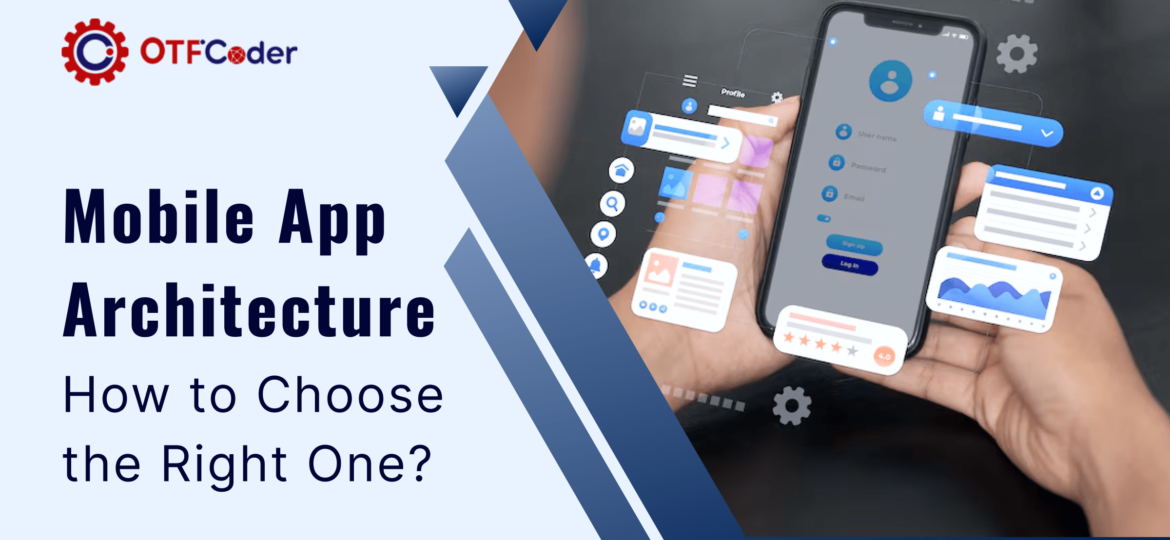
In the fast-evolving world of technology, developing powerful mobile applications requires not just creativity and skill but also a solid understanding of mobile app architecture. The architecture you choose can significantly impact the performance, scalability, and maintainability of your app. Whether you’re designing mobile applications for iOS, building applications for Android devices, or offering mobile application development services, selecting the right architecture is crucial for success.
The Importance of Mobile App Architecture
Mobile app architecture serves as the foundation of your application. It outlines the structure, components, and the way these components interact with each other. A well-chosen architecture ensures that your app is scalable, secure, and efficient. On the other hand, a poorly chosen architecture can lead to performance issues, scalability challenges, and high maintenance costs. In this blog, we’ll explore the key considerations in choosing the right mobile app architecture, helping you build applications for Android devices and other platforms with confidence and efficiency.
Understanding Mobile App Architecture
Mobile app architecture is the blueprint that defines how the various parts of an app are organized and interact. It includes layers such as the presentation layer (UI/UX), business logic layer, and data access layer. These layers help in separating concerns, making the app more modular and easier to manage.
1. Key Components of Mobile App Architecture
- Presentation Layer: This layer deals with the UI/UX components and ensures that the user interacts smoothly with the application.
- Business Logic Layer: This layer contains the core functionality of the app, including business rules, workflows, and data processing. It is responsible for the app’s main functions and interactions with the data layer.
- Data Access Layer: This layer manages data persistence, whether it be local databases, cloud storage, or remote servers. It includes data access objects (DAOs), repositories, and data models.
2. Types of Mobile App Architectures
Choosing the right architecture depends on the specific requirements of the app, such as performance needs, target audience, and development budget. Here are some common mobile app architectures:
Android Mobile Application Architecture
Android Mobile Application Architecture is specifically designed for building applications for Android devices. This architecture is based on a set of components that are essential for developing Android apps, including Activities, Fragments, Services, Content Providers, and Broadcast Receivers. Android architecture follows the Model-View-Controller (MVC) pattern.
Android architecture provides the flexibility to use other design patterns like Model-View-ViewModel (MVVM) or Model-View-Presenter (MVP) depending on the app’s requirements. The key advantage of Android Mobile Application Architecture is its native performance and the ability to leverage platform-specific features.
IOS Mobile App Architecture
iOS Mobile App Architecture is tailored for designing mobile applications for iOS devices like iPhones and iPads. Similar to Android, iOS architecture also follows the MVC pattern. However, it uses specific components such as View Controllers, which manage the views and handle user interactions. The architecture consists of:
- UIKit: The core framework for building user interfaces in iOS apps.
- Core Data: Manages the app’s data model and persistence layer.
- Foundation: Provides basic functionalities like data storage, text processing, and network communication.
iOS architecture is ideal for applications that require high-quality graphics, smooth animations, and integration with Apple-specific features like Siri or ARKit.
Hybrid Mobile App Architecture
Hybrid Mobile App Architecture provides access to device hardware features through plugins, making it possible to use the camera, GPS, and other native functionalities. The main advantage of hybrid architecture is the ability to develop a single codebase that runs on multiple platforms, reducing development time and costs. However, hybrid apps may not provide the same level of performance and user experience as native apps, especially for complex applications with heavy graphics or intensive processing needs.
Cross-Platform Mobile App Architecture
Cross-Platform Mobile App Architecture aims to build applications that can run on multiple platforms using a single codebase. Unlike hybrid apps, cross-platform apps are compiled into native code, offering better performance and user experience. Popular frameworks like React Native, and Flutter enable developers to create cross-platform apps with near-native performance. Cross-platform architecture is ideal for reaching a wider audience without investing in separate development teams for different platforms. It allows for faster time-to-market and easier maintenance since updates and bug fixes can be applied to the shared codebase.
3. Factors Worth Considering for using Mobile App Architecture
Selecting the right architecture involves evaluating several key factors. Here are some critical considerations:
Business Requirements and Objectives
It is essential to understand the business goals and requirements before choosing the right architecture. Consider factors such as the target audience, market size, and expected growth. For instance, an app targeting a large, diverse audience might benefit from a microservices architecture for scalability.
Performance and Scalability
The architecture should support high performance and scalability to handle increasing user loads. Serverless and microservices architectures are excellent choices for apps with fluctuating traffic and high-performance requirements.
Development Budget and Timeframe
While microservices and serverless architectures offer scalability and flexibility, they can also be more expensive and time-consuming to implement compared to monolithic or layered architectures.
Technology Stack and Tools
The technology stack, including programming languages, frameworks, and tools, should align with the chosen architecture. For example, building applications for Android devices might involve using Java or Kotlin, while iOS apps typically use Swift or Objective-C.
Maintenance and Upgradability
Consider the long-term maintenance and upgrade needs of the app. An architecture that supports easy updates and feature additions can save significant time and resources in the future. Layered and microservices architectures often offer better maintainability compared to monolithic architectures.
4. Best Practices in Designing Mobile Applications
To ensure the success of your mobile app, follow these best practices when designing the architecture:
- Modularity: Design the app in a modular way, allowing independent development and testing of components.
- Scalability: Plan for scalability from the outset to accommodate future growth.
- Testing: Use automated testing tools to ensure the app’s stability and performance.
- Documentation: Maintain thorough documentation to facilitate future maintenance and upgrades.
Read More: The Mobile App Development Process: 11 things you should know
Conclusion
Choosing the right mobile app architecture is a critical decision that can impact the success of your application. By carefully considering factors such as business goals, budget, performance, and scalability, you can select an architecture that aligns with your needs. Whether you opt for native, hybrid, or cross-platform solutions, the key is to ensure that the architecture supports the development of powerful mobile applications and provides a seamless user experience.ure supports the development of powerful mobile applications and provides a seamless user experience.

